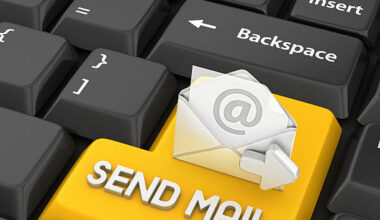Did you know the phrase “please let me know at your earliest convenience” will not get you the timely response you are expecting?
Yes, it’s polite, it’s professional, and it suggests you’d like a response soon. However, the phrase can sometimes lack clarity or urgency, leaving the recipient unsure of how quickly they need to respond.
Crafting effective emails that strike the right tone is crucial.
In this post, we’ll look at better ways to say please let me know at your earliest convenience which will help you get faster responses and maintain a courteous tone.
Why Is It Important to Choose the Right Phrase?
When you’re sending an email, especially in a professional setting, your tone is everything. Here’s why it matters to put thought into your wording:
Politeness Matters: People appreciate professionalism and politeness, and the right phrase can strengthen working relationships.
Avoiding Misunderstandings: The phrase “earliest convenience” is polite but often vague. It doesn’t clearly define urgency, and some people may misinterpret it as “get back to me whenever.”
Conveying Urgency: Choosing words that politely add a sense of timeliness can lead to faster, more reliable responses.
Let’s look at what’s being said with “Please let me know at your earliest convenience” and why some rephrasing might be beneficial.
Analyzing the Standard Phrase
The phrase “Please let me know at your earliest convenience” is designed to be polite, giving the recipient flexibility in responding.
It’s often used in emails to convey a respectful request for information, confirmation, or action without sounding too direct. However, the issue is that it’s open-ended and lacks specificity.
The expression doesn’t specify when you need a response, which can lead to delays if the recipient assumes there’s no rush.
Also, the word convenience might signal that the response isn’t a priority, leading to slower follow-up.
So, what can you say instead? Here are some more specific ways to say please let me know at your earliest convenience.
Effective Ways to say Please Let Me Know at Your Earliest Convenience
A. Direct and Polite Requests
Sometimes, a more direct approach can make your emails clearer without losing politeness. Here are a few phrases you can try:
1.“Could you please update me by [specific date or time]?”
This version adds a specific deadline, which is respectful yet helps the recipient understand the timing.
For example, if you’re requesting an update, you could write, “Could you please update me by Friday?” This adds urgency without pressure.

2.“I would appreciate it if you could reply by [day/time].”
This uses a courteous approach, adding gratitude upfront. It’s perfect if you’re following up on something important, but you want to give the recipient some flexibility.
For instance, “I would appreciate it if you could reply by tomorrow morning.”
B. Urgent But Respectful Phrasing
When you need something sooner rather than later, you can still maintain a polite tone while conveying urgency. Consider these phrases:
3.“When possible, could you provide your feedback by the end of the day?”
It subtly conveys urgency while respecting the recipient’s availability. The use of “when possible” softens the request, and adding “by the end of the day” gives it a clear timeframe.
4.“It would be very helpful to receive your response by [time].”
Here, you’re emphasizing that the response would be beneficial to you within a certain timeframe.
This approach is especially useful if the information the recipient provides will help you make progress on a project.
C. Collaborative Language
Collaborative language creates a sense of partnership and makes the request feel more cooperative. Here are some options:
5.“Please let me know if there’s anything you need to provide an update by [date].”
The wording here shows empathy and signals your willingness to help them respond quickly.
Let’s say you’re working together on a project, you might say, “Please let me know if there’s anything you need to provide an update by next Tuesday.”
6.“Could we touch base by [date] to ensure everything is on track?”
Using “we” here makes the request sound like a mutual check-in, rather than a demand.
It’s a great way to ask for an update in a supportive tone, especially for ongoing projects or collaborative work.
Choosing The Right Phrase For The Context
Now that you’ve got some alternatives, how do you know which one to use? Here are a few tips for picking the right phrase:
I. Consider the Level of Urgency: If it’s something you need immediately, go for a phrase that includes a specific time or date.
II. Think About Your Relationship with the Recipient: With colleagues or teammates, you can often use a more direct approach. But with clients or supervisors, you may want to add an extra layer of politeness.
III. Adjust for Tone: For formal emails, keep it polite and specific. For less formal interactions, you can be more straightforward and use phrases that emphasize teamwork or efficiency.

Common Mistakes to Avoid in Professional Email Requests
When writing professional emails, a few common mistakes can make your request less effective. Here’s what to watch out for:
A. Avoid Vague Language: Steer clear of words that can be misinterpreted, like “earliest convenience,” if you need a response within a certain timeframe. Being specific about deadlines is key to getting timely replies.
B. Using Excessive Politeness: Overusing polite language can sometimes make a request seem optional, especially if it’s combined with overly apologetic language. Stick to one polite phrase, and keep it short.
C. Being Too Demanding: Strongly worded phrases like “I need this by” or “I expect a response by” can feel like demands. Always consider the other person’s workload and frame your request in a way that respects their time.
Examples Of Email Scenarios
Here are some examples of different types of emails showing you how to put these phrases into action:
1: Requesting a Project Update from a Colleague
“Hi [Colleague’s Name], I hope you’re well! Could you provide an update on the project by the end of the day? Thank you in advance for your help!”
2: Following Up on Feedback from a Client
“Hello [Client’s Name], I hope your week is going well. If possible, could we have your feedback by Friday to stay on schedule? Please let me know if you have any questions. Thank you!”
3: Asking a Supervisor for Input on a Draft
“Dear [Supervisor’s Name], I’ve attached the draft for your review. When you have a moment, could you please look it over and share any feedback? I’d appreciate it if we could discuss this before Thursday. Thanks very much!”
Final Thoughts
Choosing the right phrase when asking for a timely response can make a big difference in how your email is received.
Requesting feedback, checking in on a deadline, or simply asking for an update can become easier after finding the right ways to say please let me know at your earliest convenience.
Try out these alternative phrases to improve your email skills, build stronger professional relationships, and ensure your requests are met promptly.
With a bit of practice, you’ll see how these small changes can make a big impact on your communications.
Looking forward to faster responses and more effective conversations? Share to your work colleagues.







